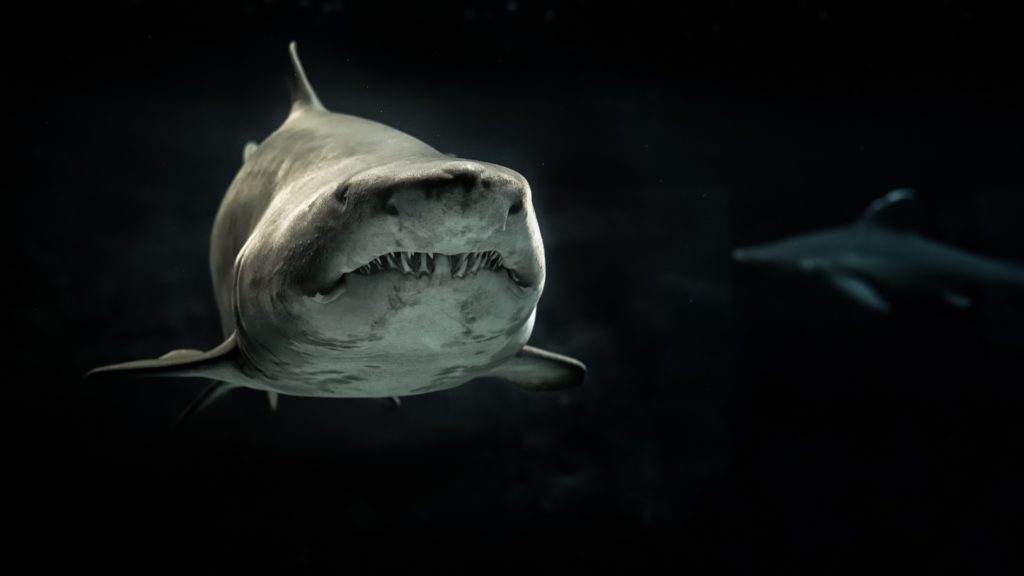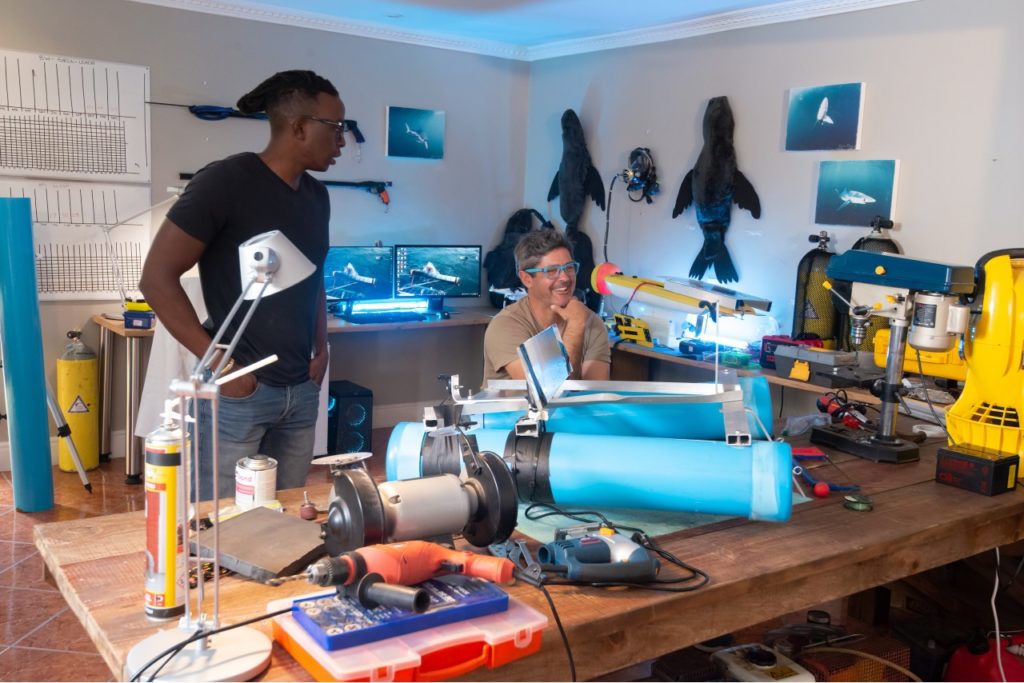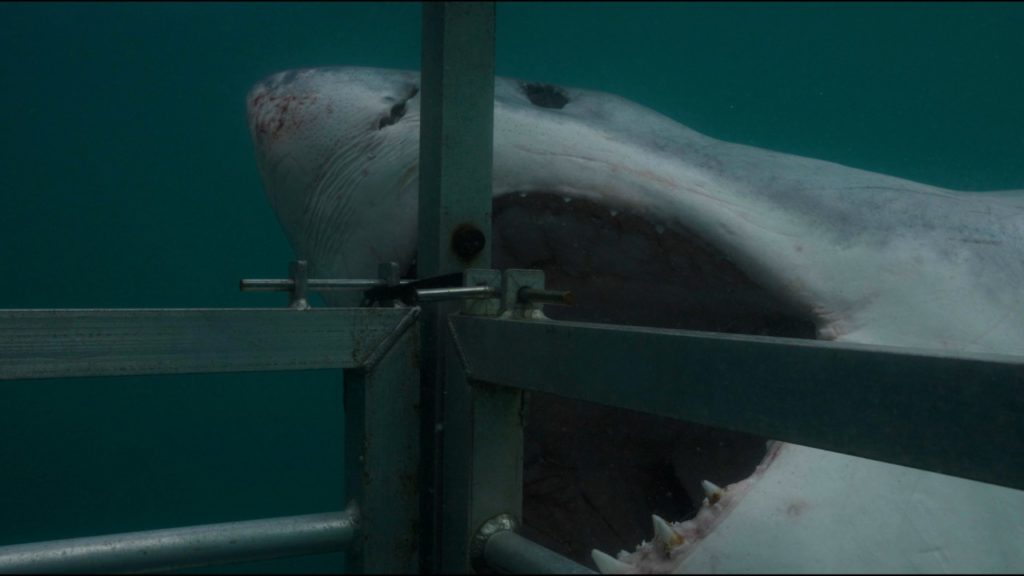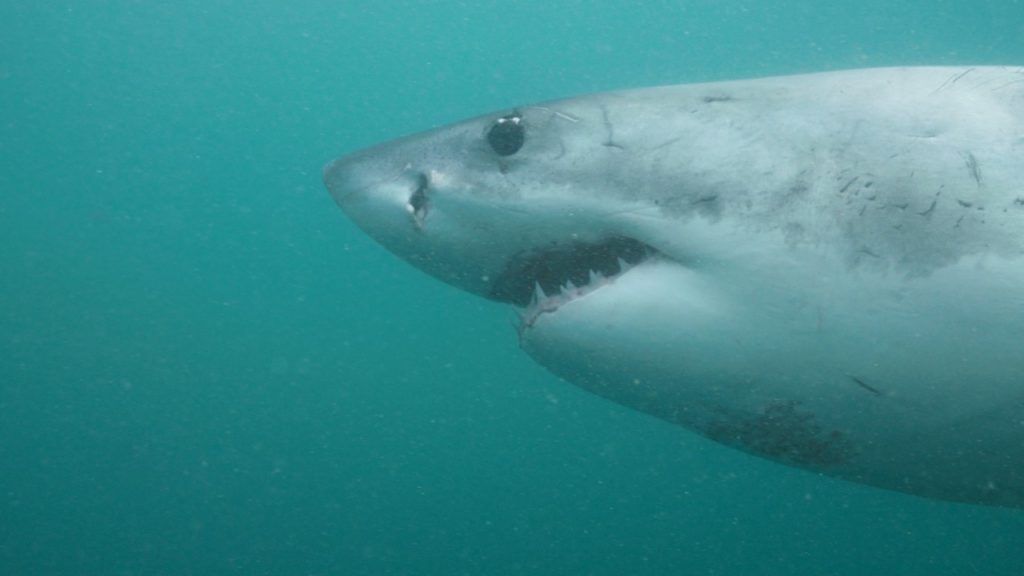
Sharks have super strength (jaw-crushing strength up to about 2 tons), they can heal faster than average, survive underneath volcanoes (we’re not talking lava here, but acid water), disguise themselves within any body of water, and will even cuddle with a human for a treat (and no, the human is not the treat, usually). Land predators, like the jaguar, use their unique print to help them blend into their surroundings, and the Great White also takes advantage of this with their signature two-tone (white belly, dark back) body style. However, today we’re talking about something much more impressive.
Let’s say that a nice meal is floating along the top of the Atlantic Ocean, sunning itself, and thinking about getting a snack, when a familiar-looking shadow is never seen creeping up from underneath. And then a Great White explodes out of the waters, jaws open, game over. Now imagine one of the most successful and lethal predators of today having environment-based camouflaging abilities similar to the chameleon, tree frog, squid, or octopus, and nobody has ever been the wiser… until now.
The idea of a shark having powers of environmental-based camouflage has taken on a huge role in the lives of famed shark researcher, Ryan Johnson and his colleague, Gibb Kuguru. And this month during Sharkfest their theory is put to the test in the film, “Camo Sharks”. To celebrate their findings (spoiler alert), we have been invited to spend some time with Ryan, and fall even more deeply in love with this amazing, powerful, dare we say cuddly, and forever mysterious prehistoric creature.

This creature is so powerful and massive [but] its success could be due to a lot more subtle reasons; color-changing being one of them.”
Urbasm: We’ve been looking forward to this Ryan.
Ryan Johnson: Me too, Man.
Urbasm: What about your previous research prompted the idea that a shark may have some sort of camouflaging ability?
Ryan Johnson: It actually came from Gibb’s work. He had contacted me because he was doing his doctorate on the black tip sharks of the Maldives and looking at these color boards. And he was thinking about how it allowed these sharks to blend better into the environment. And I was thinking back and said, you know Gibbs, I have seen these great whites change color. I can’t prove it, but I have seen it with my own eyes and know it’s true. And then we just started from there, rattling off that this could be a big part of their ecology… and it just snowballed.

Urbasm: How should the idea of the existence of camo sharks change the way we think of the Great White from here on?
Ryan Johnson: Well, I think, probably like a lot of your readers and myself, I was very much fixated on the size, power, and strength of the great white; and very focused on that being the reason it is such a successful predator in our oceans. I think this research and discovery really offers an opportunity to understand that just because this creature is so powerful and massive that its success could be due to a lot more subtle reasons, color-changing being one of them. I think as we go further, we should really start appreciating a lot of the subtle adaptations that not only the great white, but a number of sharks have, that we don’t initially think of but are actually behind the reason that they have been such a successful predator in the oceans for upwards of 400 million years.
Urbasm: What’s next for you?
Ryan Johnson: In the last six to eight months, we have been collecting a lot of data. We need the replicates; we need that done properly to get into a publication. Personally, for me, I’ve become more fascinated with shark attacks and the mitigation of shark attacks. I think research-wise that is really where I am going to focus for the next couple of years after this. Because I have realized that a single shark attack has such a disproportionate impact on the ability to get widespread conservation support. We had an attack here a week ago and it’s got a whole community up and arms. And if we can do better work mitigating that, and I think particularly with my access to test mitigation measures on great whites, I think that could have a big role in their future conservation.

Urbasm: Those attacks put quite a negative light on the entire species.
Ryan Johnson: Right. Sharks aren’t the easiest sell in the world to get large spread conservation support. There is a reason why you don’t have a shark on the cover of the WWF logo. I think it is really trying to allow humans and sharks to co-exist and find ways that they can that is very important.
Urbasm: Speaking of getting along, we have read some interesting stories on other species of sharks that display moments of affection towards people. From your experience, how would you describe that ‘personality’ of a Great White?
Ryan Johnson: (laughs) It is very hard to get nice and cuddly and close to them to build that kind of relationship. I’ve been watching those [videos] on YouTube and elsewhere, also, and it is absolutely amazing what people are doing with them. Initially, I was saying, well obviously these guys are feeding them little scraps of food and with food there are friendships. But recently with the sharks coming and actually seeking out humans and the humans were removing these hooks from the mouth. I think that has been absolutely fascinating. I would love to do that with a Great White (laughs) but yeah, I don’t think that is going to happen for [many] reasons.
Urbasm: We had a feeling that you were going to say that. So, what gets you out of bed each morning to go out and accomplish all this necessary research?
Ryan Johnson: I think a lot of people are different, but for me what gets me up is curiosity. I have these questions that just go around in my head and I want them to be answered. Sharks for me are a vehicle to explore this incredible natural world we have. If it wasn’t for sharks, I would be trying to understand nature somewhere else. But sharks are what I know and what I love. So, every time you go out there and work with them, you are constantly thinking, wow, what if this, what if that, and how does this work. And then I come back and I think more. And you go look at the literature and you realize that shark ecology and behavior isn’t really a hugely studied field even today. A lot of these questions are still not answered, and then you get this moment where you are like, hey man, how do I go about answering this because I want to know. It is a curiosity for an animal and a creature that I am utterly in awe of.
Urbasm: Love that answer. Do you have any other interesting ‘hunches’ about the Great White that you may be looking to research in the future?

If you do that you are going to communicate to that shark that you are also a predator, you are aware of its presence, and it is just going to carry on its way.”
Ryan Johnson: Well, I definitely have a few. Let’s say that I am trying to make ‘Camo Sharks Part 2’. Even when we were down at UCT on that confocal microscope studying the skin of great whites and looking at their color change capability, we made a big discovery that nobody ever thought about in terms of the function of their skin. But unfortunately, I am currently talking to National Geographic about it, and hopefully, we will have another documentary come out in another year or so’s time.
Urbasm: Fantastic, we will leave it at that sir. And our final question is: What would you say are the three most important things every man should know about sharks before entering an area that may be inhabited by them?
Ryan Johnson: Make sure that you swim with a buddy because even if you can’t outswim a shark, you can outswim your buddy.
Urbasm: (laughs)
Ryan Johnson: But seriously, if you go into the water don’t be afraid to talk to the locals. Sharks are high-profile now, and if sharks are in the area people in the community will know about it. And if you are worried at all about the presence of sharks, listen to the locals; they will tell you a lot. A lot of the things that have gone wrong in South Africa have been because the knowledge was there, but somebody refused to speak to the locals.
Urbasm: Yes, know what you are getting yourself into.
Ryan Johnson: And thirdly, understand that if you do see a shark in the water, it is not going to go after you. Ninety-nine percent of the time it is going to be absolutely fine. Particularly if you behave right…
Urbasm: (Listening intently)
Ryan Johnson: And you behaving right is not panicking, not splashing, facing the shark, holding your ground. And even if that sounds counter-intuitive, if you do that you are going to communicate to that shark that you are also a predator, you are aware of its presence, and it is just going to carry on its way.
Urbasm: We’ll sum that up with, Don’t panic! Thank you, Ryan, this has been a lot of fun.
You can check out more of Ryan’s work on his website, and be sure to watch “Camo Sharks” during Sharkfest this coming week on National Geographic Television, Disney+, and many other Disney platforms beginning this Sunday, July 10th.
Here’s a sample of what’s in store for #sharkfest2022.
About Dr. Eric J. Leech
Eric has written for over a decade. Then one day he created Urbasm.com, a site for every guy.